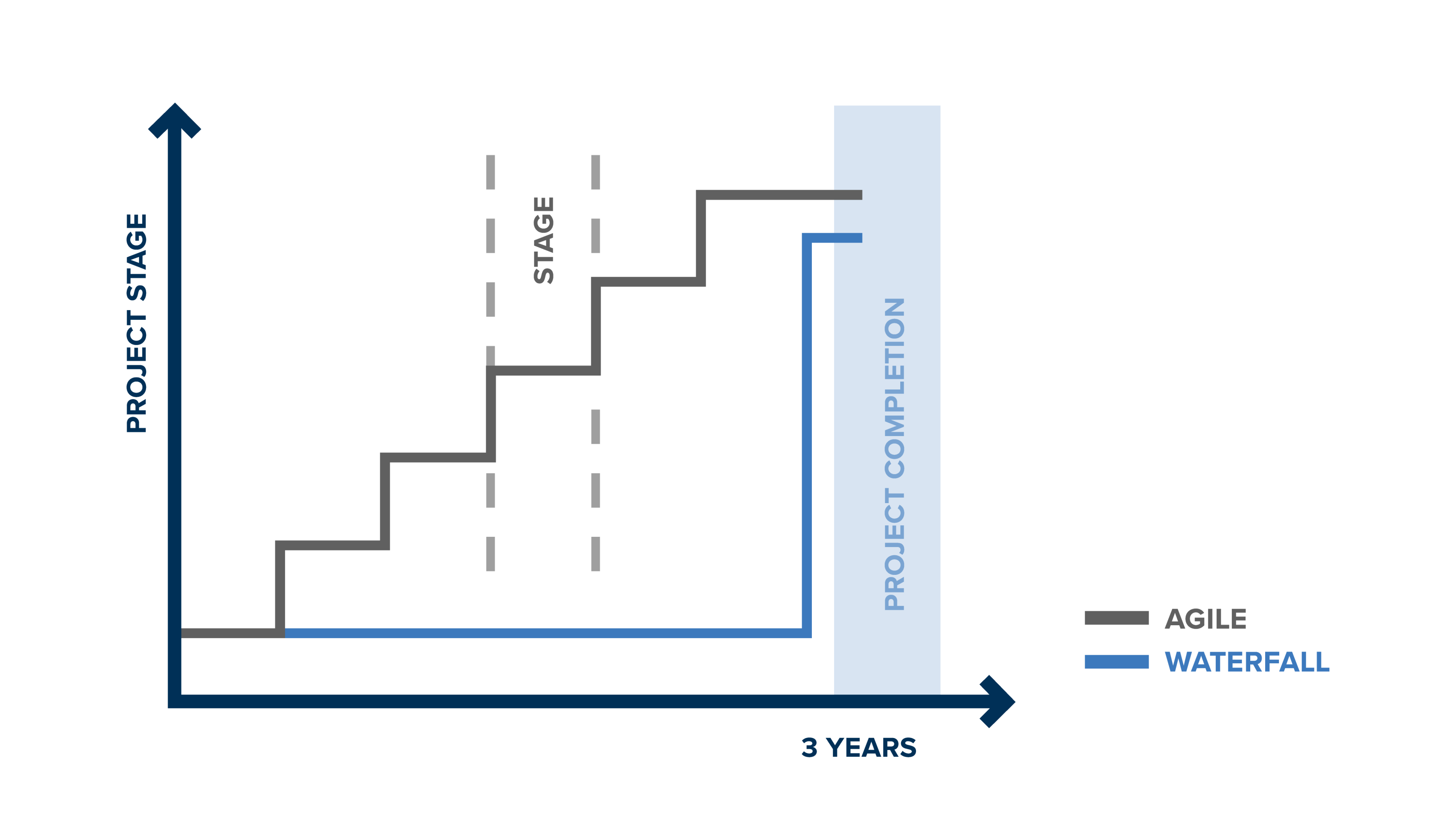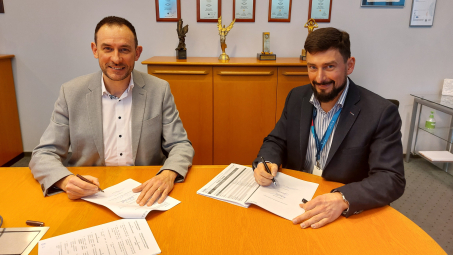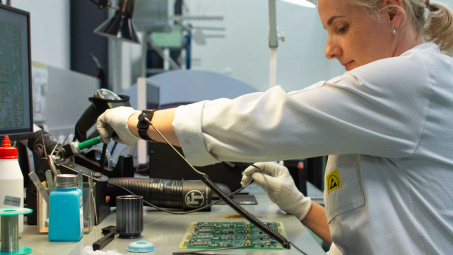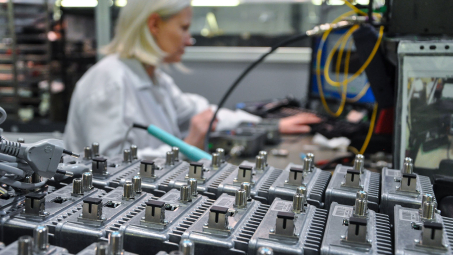Agile management – is it worth a sprint?
New technologies have changed our lives. They have. In many cases, they made them easier, more convenient and faster. Of all these things they will never forgive sluggishness, especially when you work in the connectivity industry. Once, a group of sharp minds converged and said enough to the inanity of corporate rusty administration machines hidden deep in companies’ corridors. That’s how agile was born – a mindset which assumes one thing: to act. And we tested some quick methods on how to do it.
It was in the 90’, when the then rapidly
developing computing industry suffered from staying behind the always growing
needs. Businesses grew faster than innovative projects could be implemented.
The phenomenon was called “application delivery lag”. The projects, which had
been taken up at the beginning, were due to meet the end sometimes 20 years
later. Imagine receiving a package with your order made 20 years ago! Anyone
still storing data on floppy disks…?
Then on February 11th 2001, seventeen people from the software industry met and established 12 principles of project management. Since the nature of this work field is marked by rather rapid information flow, the Agile Manifesto soon became the point of reference for most of the IT professionals who next contained with their agile flair their colleagues from other departments.
People no longer a value – they
are simply important
You do not want to wait with graphics until your copywriter finds this one perfect key word which will finish the website… You want people to communicate their ideas fluently and on every step for the proceeding to go on. And that’s what agile is about – acting. Moreover, agility is a mindset, not a toolkit with neat and clear directions but an attitude. A change from “people are the most important asset” to “people are the most important”. Listening to clients and engaging them in the development process is a picklock that opens many business doors. In VECOTR BLUE HUB, for instance, the tech labs are always prepared for the clients who can visit them and bring some new ideas in the project. It develops together with changing needs, not with the plan made years ago.
Sometimes, however, the old methods still prove
to do well in some predictable tasks. Not all projects are suited to agile
management. Agile holds good if directions have not been specified or a lot of
modifications are in the way – it is cheapest and fastest. In other case,
waterfall might be an idea.
“You don’t need any agility in assembling the same component the hundredth time – you know every step how to do that, and that’s waterfall planning,” says Dominika Rogala, Software Engineering Manager. “Like building a house – you have to wait for the tiles in the bathroom until you erect the walls. And it is totally fine, if this is the most efficient and cheapest way of production now.”
Agile, however, in a way let us do both. It means that you could put the tiles and build the walls simultaneously. Following this logic in the engineering of electronic devices, before you set yourself up to the finishing and production, you have already ended up with prototypes. Moreover, your clients may come to a realization that the prototypes seem fine and they are okay with them already. They may make use of them! This scenario is possible thanks to the rule mentioned above. You engage clients in the project so you meet them halfway and inform about its status. It should be regular, brief and concise. And the honorable gathering of the seventeen left also some hints on this.

Sprint, stand, sprint, stand and remain viable
On that memorable wintery February day, it was settled that the gap between updates of the project statuses should not extend over more than a month span. Two weeks are the optimum choice. The team of engineers, sales representatives, marketeers, financial analysts – all have their points on the horizon and they begin their sprint! From time to time, the team meets during stand-ups so that they would not be tempted to linger on the meeting too long – they come into the room, enunciate their tasks prospects and proceedings, and go. With this simple method of iteration you know the shape of your project and if impediments come in the way, you react.
Moreover, in designing electronic devices sometimes you achieve the point of clients’ satisfaction before meeting the end-product. For instance, when you have already secured a device’s components and grant it proper certification. Doesn’t it sound like a takeaway product? You have come to the point where your client may recycle your know-how and it’s still a long way to go. How many parts of your project is reusable if you stay alert?
The idea of keeping the project updated and divisible goes together with sustaining its viability. After each sprint, the client is granted a peep-in so that they have a chance to give directions to the operating team. That prevents from delivering the product which engineers designed in accordance with the instructions given at the beginning but which no longer meet today’s needs. Imagine you just got up to show the effect of your three-year work. In new technologies what you actually present is the way you would do this three years ago…
“That’s the rapidity of this field,” points out Dominika. “You work with regard to what is outside, not to what was planned. Even if a project lasts a few months, we may still have new outcomes or ideas, which would be impossible to implement in the waterfall system. With agile management you meet the point of change, say ‘let’s do it different’, and the team is ready to react.”
In other words, you deliver business value in small steps. Then again, some projects favor this attitude and some find it unsuitable. Think about receiving the keys to your home that does not have windows yet. You want it to have it finished. It is different with the electronic industry – in VECTOR BLUE HUB, for example, it is expected to get a feedback that puts the project back to the right track. Thus, what is the role of a manager in it?
“Keeping all the people involved updated, on the lookout for communication disturbances, misunderstandings or paying attention to what is really viable for the project development,” Dominika counts out.
Managing by mindset, not by rules
If you were supposed to be left with the essence of project agility, it would be that being agile is not having a toolkit with ready-to-use methods. It is a mindset – a belief to follow. An assurance that through the whole process it is people who are the most important, and to reach the goal you must trust them. And there is nothing unusual about it when one refers such an outcome to the Manifesto which mentions: Build projects around motivated individuals. Give them the environment and support they needs, and trust them to get the job done. So is it worth a sprint for the project results then? “You show people the point where you all go. At the end, you all deliver bright ideas and, sure enough, you’ll be surprise you – by the unprecedented results and well-managed time,” Dominika sums up.








